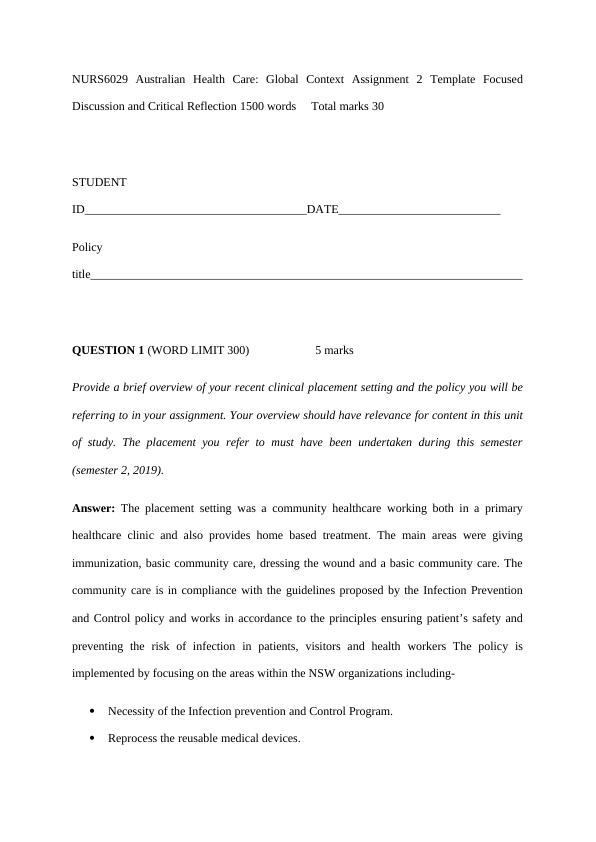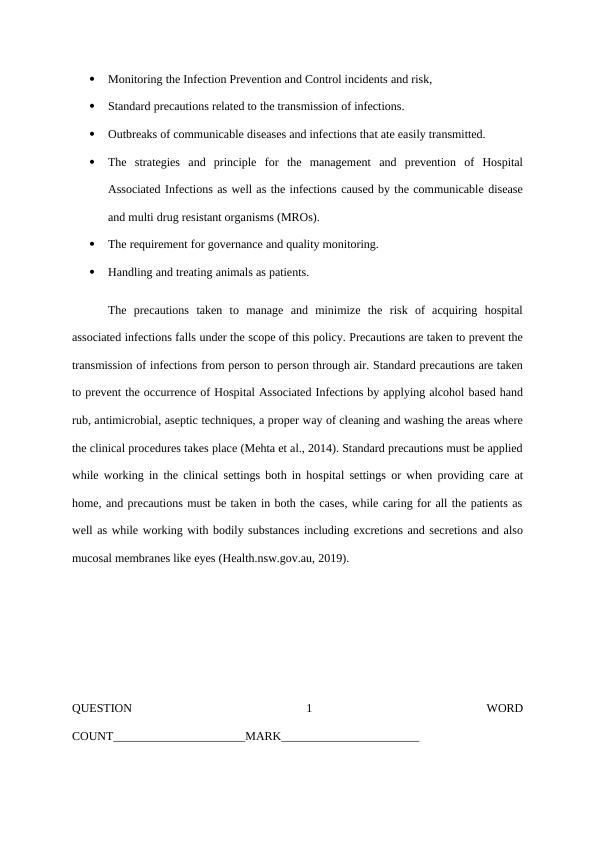Nurs6029 Australian Health Care Assignment 2022
This assignment requires students to reflect on and think critically about a health policy implemented in their clinical placement, and relate that reflection to research evidence and other scholarly articles. Students are required to identify a health policy in their recent clinical placement and provide an overview of the placement setting, critically review the policy, and evaluate its effectiveness within the given environment.
Added on 2022-10-11
Nurs6029 Australian Health Care Assignment 2022
This assignment requires students to reflect on and think critically about a health policy implemented in their clinical placement, and relate that reflection to research evidence and other scholarly articles. Students are required to identify a health policy in their recent clinical placement and provide an overview of the placement setting, critically review the policy, and evaluate its effectiveness within the given environment.
Added on 2022-10-11
End of preview
Want to access all the pages? Upload your documents or become a member.




